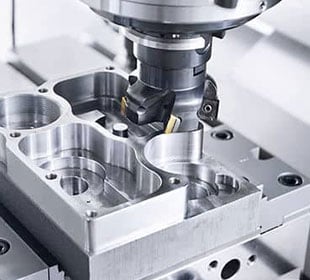Introduction
When it comes to CNC machining, reducing the amount of money spent on production is frequently the most important goal. This is true whether you are planning to make a single prototype or are getting ready for large-scale production.
To your good fortune, your choices as the designer will have a significant impact on the total cost. If you follow the advice in this article on how to design for machinability, you will be able to create components that are optimized to reduce costs while still meeting the criteria of your design.
First, we investigate the factors that determine the cost of CNC machining. Following that, a comprehensive list of actionable tips to save costs of CNC machined parts is provided for consideration.
This article can help you decide if CNC machining or 3D printing is the better option for your application if you are unsure which one would be more beneficial.
What factors determine the price of CNC parts?
The following factors can have an effect on the cost of CNC machined parts:
Time spent machining: The cost of a component will increase proportionately with the length of time required to machine it. In CNC, machining time is frequently the primary factor that determines costs.
Start-up costs are substantial for lower volume production since they are associated with the creation of CAD files and the planning of production processes. This cost is not going to change, but there is the potential to lower the price per unit by taking use of something called “economies of scale.”
Other costs associated with manufacturing: When you design parts with specific specifications (for instance, when you define tight tolerances or design thin walls), you may need to employ specialized tools, a more stringent quality control system, and more processing steps, all of which must be performed at slower machining speeds. Naturally, this has an effect on the total amount of time required for manufacture (and the price).
Let’s take a look at the different ways in which a design might be modified to reduce the cost of CNC now that we understand where those costs originate…
First and foremost, make sure to round off all of the internal vertical edges.
When cutting the edge of a pocket, all CNC milling machine have a cylindrical shape and produce a radius as a result of the cutting action.
Utilizing a tool with a smaller diameter enables one to achieve a smaller corner radius. Because of this, however, it will be necessary to make numerous passes at a slower speed. This is because smaller tools cannot remove material in one pass as quickly as larger tools can, which will result in an increase in both the machining time and cost.
Second piece of advice: reduce the overall cavity depth.
Machining deep cavities has a significant impact on the cost of CNC parts because it requires a significant amount of material to be removed, which is a process that is very time-consuming.
It is essential to keep in mind that CNC tools have a finite cutting length. In general, these tools perform most effectively when cutting cavities with a depth that is up to two or three times their diameter. For instance, a milling tool with a 12 diameter may cut cavities that are up to 25 mm deep without causing any damage.
It is feasible to cut cavities that are deeper (up to four times the diameter of the tool or greater), but doing so will result in an increase in cost due to the requirement of specialized equipment or multi-axis CNC systems.
When cutting a cavity, the tool needs to ramp into the appropriate cutting depth in order to get the desired result. Smooth entrance demands appropriate space.
Increase the thickness of thin walls, as this is the third piece of advice.
If weight is not a significant consideration, opting for thicker solid portions, which are also less expensive to produce, will result in greater stability.
When machining a thin wall, it is necessary to make many passes with shallow cutting depths in order to prevent the wall from deforming or cracking. Machining thin features accurately is difficult because of how susceptible they are to vibrations; as a result, the amount of time required to machine them increases significantly.








